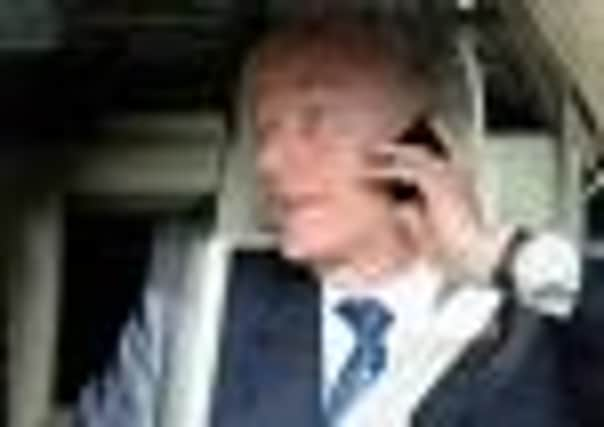Catalogue of errors that led to collapse of RBS


The near-500 page report, which was to be released by the Financial Services Authority (FSA) at 6am today, will shed light on just what went wrong in the lead-up to RBS’s £45.5 billion rescue.
The bank, which is now more than 80 per cent owned by the UK government, had to rescued amid the credit crunch in 2008 after being weakened by the disastrous £50bn acquisition of Dutch lender ABN Amro, under the leadership of Sir Fred Goodwin.
Advertisement
Hide AdAdvertisement
Hide AdThe report is expected to include a recommendation that banks should need regulatory approval for significant acquisitions and possibly also obtain independent advice about such deals.
It will raise the prospect of bank directors being forced to prove their innocence in the event of a future bank failure but will confirm that the FSA does not intend to pursue any new enforcement action against any of RBS’s former directors.
The report is expected to outline six principal reasons for RBS’s downfall, including an excessive reliance on riskier short-term funding and inadequate due diligence, which paved the way for RBS and its consortium partners to take over ABN Amro.
The FSA is likely to say that it failed to spot the problems because it was under pressure from the government to operate a hands-off regulatory regime.
It is also thought the regulator will say that the ultimate failure of RBS was a result of decisions made by the bank’s management.
Last night, the FSA had yet to officially comment.
The report will say that the FSA itself did not understand the wider banking system before the crisis, stating: “By 2007, the entire UK banking system was dependent on wholesale funding and therefore liquidity had become a huge issue and the FSA failed to appreciate this.”
RBS pressed ahead with the biggest banking takeover in history but ABN Amro’s main assets turned out to be all but worthless.
The report is expected to say that, in many respects, FSA staff lacked the skills to monitor banks as large and complex as RBS. “The FSA failed to foster the skills necessary to monitor the capital adequacy of the banks,” it will say. It is thought it will highlight the “flawed” internal checks and balances within RBS and that the FSA did nothing to prevent the deal, which almost ruined Britain’s financial sector.
Advertisement
Hide AdAdvertisement
Hide AdThe report, carried out by the FSA and two City veterans, Sir David Walker who held senior positions at Lloyds TSB and Morgan Stanley, and leading lawyer Bill Knight, will also say that the regulator carried out little fundamental analysis of the banks it was supervising before the financial crisis in 2007, and that many aspects of its work were either inadequate or deficient.
The FSA said in a 300-word report released last December that it had found no evidence of fraud or dishonest activity in the lead-up to the crisis, although the bank had made a series of bad decisions.
But the full report, which is the result of a two-and-a-half-year inquiry, is now being made public at the request of the Commons Treasury select committee, which said the original statement summing up the results of its investigation had failed to answer important questions or show that lessons had been learned.
Since it became clear that the report would be made public, lawyers representing top bankers are reported to have been involved in protracted negotiations to have words such as “gambling” removed from the document.
But the FSA has said the report will not be a blow-by-blow account and those hoping for an investigation into the leadership of Sir Fred are likely to be disappointed.
RBS expanded aggressively under the eight-year leadership of Sir Fred, who was replaced by Stephen Hester after the bailout. It was swelled by a series of acquisitions, including NatWest in 1999 and US bank Charter One in 2004. By the time of its collapse, its balance sheet was bigger than the entire UK GDP.
• Countdown to failure
October 2007: RBS-led team wins battle for ABN Amro after rival Barclays withdraws and its offer is accepted by 86% of ABN investors.
December 2007: RBS reveals lower-than-expected write-downs of £1.5bn for both RBS and ABN Amro after the meltdown in the US sub-prime mortgage market.
Advertisement
Hide AdAdvertisement
Hide AdApril 2008: RBS asks shareholders to pump in £12bn of new capital after unveiling another £5.9bn of credit crunch write-downs.
August 2008: RBS chief executive Sir Fred Goodwin insists he is still the best man for the job despite unveiling the group’s first loss in 40 years. Pre-tax losses of £691m are the second biggest banking loss in UK corporate history.
November 2008: Former Abbey National boss Stephen Hester replaces Sir Fred as chief executive. The move comes as the government takes a 58 per cent stake in the bank for £15bn as part of a mammoth capital raising.
January 2009: The government launches a second bank rescue plan, increasing its stake in RBS, as the bank announces that losses for 2008 could be up to £28bn, with the majority made up of write-downs on the ABN Amro acquisition.
February 2009: History is made as RBS reports a loss for 2008 of £24.1bn, the biggest in British corporate history.